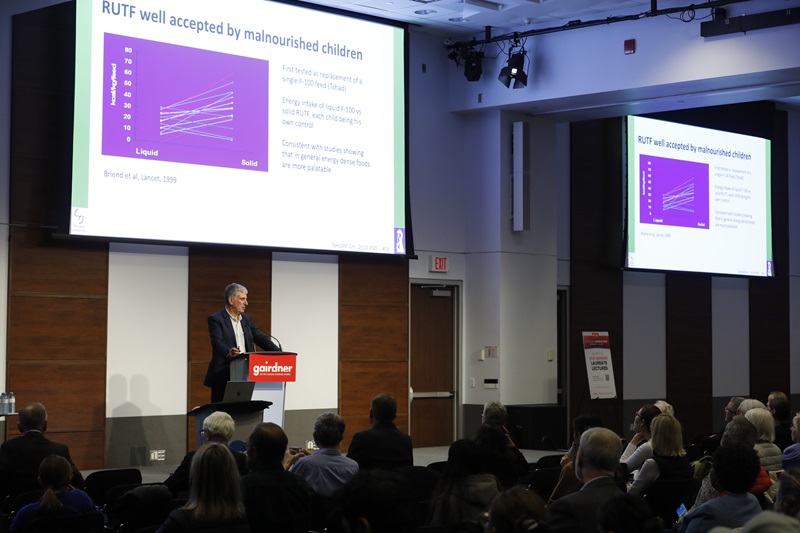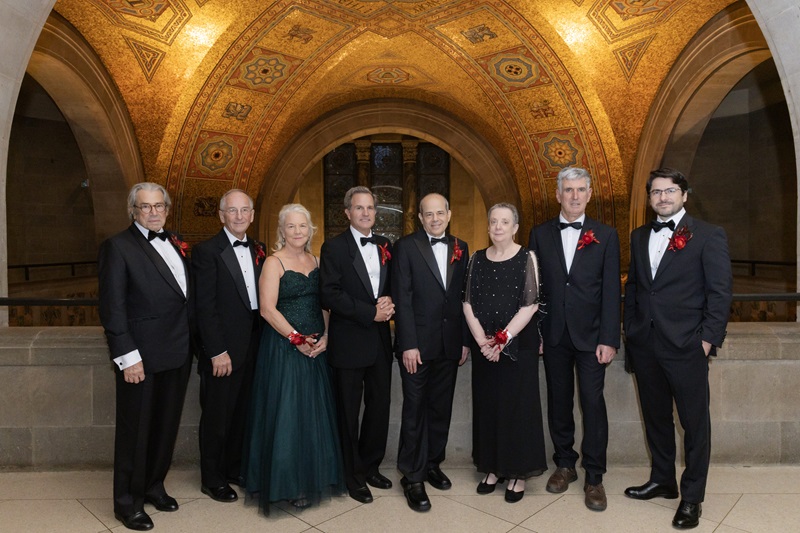Spyros Artavanis-Tsakonas

Spyros Artavanis-Tsakonas is currently Professor Emeritus in the Department of Cell Biology at Harvard Medical School where he still has an active laboratory and Professor Emeritus at the Collège de France in Paris. He joined Harvard in 1998 and was elected Professor at the Collège de France, holding the Chair of Developmental Genetics 1999.
He completed his undergraduate studies in chemistry at the Swiss Federal Institute of Technology (ETH) in Zurich and his Ph.D. from Cambridge University for work carried out at the MRC Laboratory of Molecular Biology. After postdoctoral work at the Biozentrum in Basel and at Stanford University, he joined the Yale faculty in 1981. He was appointed Professor in the Department of Biology in 1989 and then, concurrently, Professor at the Department of Cell Biology at the Yale School of Medicine. He also served as the Director of the Biological Sciences Division at Yale. From 1987 to 1998, he was a Howard Hughes Medical Institute Investigator until he left for Harvard. He is also the Founding Director of the Department of Genetics and Developmental Biology at the Institut Curie, Paris (2007-2009). From 2012 to March 2017, he served as Chief Scientific Officer and Executive Vice President at Biogen.
He is a member of the National Academy of Sciences, a fellow of the American Academy of Arts and Sciences, an associate member of EMBO, a corresponding member of the Academy of Athens, and a member of the Cambridge Philosophical Society. He is a cofounder of the Biotech companies Exelixis, Cellzome, and Anadys, and is the president and co-founder of the philanthropic organization Fondation Santé, that supports basic biomedical research in Greece and Cyprus.
The Work:
Notch signaling is a fundamental cellular communication pathway that plays a crucial role in regulating many different biological processes, including cell differentiation. Drs. Spyros Artavanis-Tsakonas, Iva Greenwald and Gary Struhl are awarded for establishing our foundational understanding of Notch signaling, defining how this pathway works at the molecular level and how it influences cell fate, development, and tissue patterning.
Notch was first identified over 100 years ago as a mutation that causes notches in the wings of fruit flies (Drosophila). Over time it became clear that Notch defines an evolutionarily conserved gene network involved in diverse aspects of development in many different species including mammals. Pioneering genetic and molecular work by Dr. Artavanis-Tsakonas led to the cloning of the Drosophila Notch gene and other components of the pathway. Notch turned out to be a membrane-bound receptor defining the central element of a cell signalling pathway that interacted with another membrane-bound molecule on adjacent cells, leading to intracellular signaling and changes in cell fate. Dr. Greenwald discovered and cloned the Notch gene LIN-12 in nematodes (C. elegans), elucidated its fundamental role in cell fate specification, and identified many core components of the pathway, including the intramembrane protease Presenilin implicated in Alzheimer's Disease. Drs. Greenwald and Struhl together proposed that Notch functions as a membrane-tethered transcription factor that is cleaved to release the cytosolic domain, which enters the nucleus to control gene expression. Dr. Struhl then pioneered the use of chimeric proteins to validate the cleavage model and demonstrate that Notch is activated in response to mechanical force exerted by ligands.
The Impact:
Drs. Artavanis-Tsakonas, Greenwald and Struhl’s findings have had far-reaching implications for both basic science and medicine, particularly in identifying the role of Notch signaling in diseases such as cancer and developmental disorders, and shared components with neurodegenerative diseases like Alzheimer's.





24d51815-2494-4f8a-b8f0-dc824e0d99cc.tmb-cfthumb_fb.jpg?Culture=en&sfvrsn=723f4ba6_1)

.tmb-cfthumb_fb.jpg?Culture=en&sfvrsn=72bc0e8_1)




3525a8b6-b65a-4e24-a7f6-158e625c18ab.tmb-cfthumb_fb.jpg?Culture=en&sfvrsn=63e08bc9_1)
